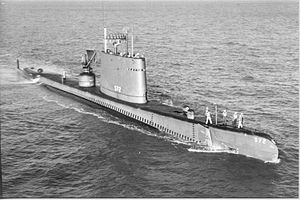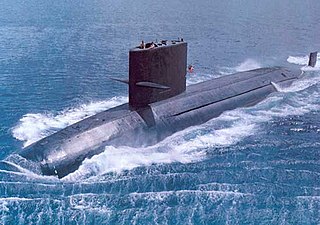
USS Bonefish (SS-582) was a Barbel-class submarine of the United States Navy, and was the second U.S. Navy submarine to be named for the bonefish.

USS Salmon (SSR/SS/AGSS-573), a Sailfish-class submarine, was the third ship of the United States Navy to be named for the salmon.

USS Tang (SS/AGSS-563), the lead ship of her class was the second ship of the United States Navy to be named for the tang.

USS Wahoo (SS-565), a Tang-class submarine, was the second ship of the United States Navy to be named for the wahoo, a dark blue food fish of Florida and the West Indies.
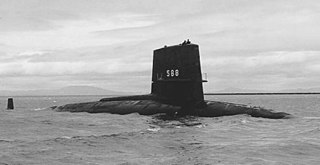
USS Scamp (SSN-588), a Skipjack-class nuclear-powered submarine, was the second ship of the United States Navy to be named for the scamp, a member of the fish family Serranidae.

USS Sculpin (SSN-590), a Skipjack-class nuclear-powered submarine, was the second ship of the United States Navy to be named for the sculpin.

USS Tautog (SSN-639), a Sturgeon-class attack submarine, was the second ship of the United States Navy to be named for the Tautog, a wrasse commonly found along the Northern Atlantic coast. The submarine was in service from 17 August 1968 to 31 March 1997.

USS Spinax (SS/SSR-489), a Tench-class submarine, was the only ship of the United States Navy named after the spinax, one of the spiny sharks scientifically known as Squalidal. Her keel was laid down on 14 May 1945 by the Portsmouth Navy Yard. She was launched on 25 November 1945 sponsored by Mrs. Tom C. Clark, and commissioned on 20 September 1946.
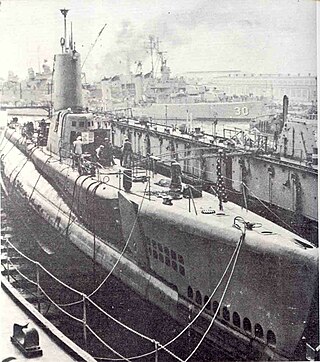
USS Medregal (SS-480/AGSS-480), a Tench-class submarine, was the only ship of the United States Navy to be named for the medregal, a streamlined, fast-swimming, bluish-colored fish of the jack family which abounds in waters of the West Indies and in the Atlantic as far north as the Carolinas.

USS Requin (SS/SSR/AGSS/IXSS-481), a Tench-class submarine, was the only ship of the United States Navy to be named after the requin, French for shark. Since 1990 it has been a museum ship at The Carnegie Science Center in Pittsburgh, Pennsylvania.

USS Rock (SS/SSR/AGSS-274), a Gato-class submarine, was a ship of the United States Navy to be named for the rockfish, a striped bass found in the Chesapeake Bay region and elsewhere along the United States East Coast.

USS Greenfish (SS-351) was a Balao-class submarine of the United States Navy. It was named for the greenfish.

USS Sea Owl (SS/AGSS-405), a Balao-class submarine, was a ship of the United States Navy named for the sea owl, a lumpfish of the North Atlantic Ocean.
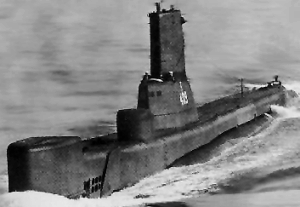
USS Piper (SS/AGSS-409), a Balao-class submarine, was a ship of the United States Navy named after the piper. Although built late in World War II, Piper completed three successful war patrols before the cessation of hostilities, operating as a life guard for plane strikes and as an advance picket for fast carrier task forces.

USS Tiru (SS-416), a Balao-class submarine, was a vessel of the United States Navy named for the tiru, a member of the lizardfish family.

USS Agerholm (DD-826) was a Gearing-class destroyer of the United States Navy. She was the only ship named for Harold Crist Agerholm, a Private First Class (Pfc.) in the 2nd Marine Division of the United States Marine Corps. He was killed during the assault on Saipan, and posthumously awarded the Medal of Honor.

USS Turner (DD/DDR-834) was a Gearing-class destroyer of the United States Navy, the third Navy ship named for Captain Daniel Turner (1794?–1850).

USS Carpenter (DD/DDK/DDE-825) was a Gearing-class destroyer of the United States Navy, named for Lieutenant Commander Donald M. Carpenter (1894–1940).
The second USS Bluebird (ASR-19) was a Penguin-class submarine rescue ship in the United States Navy.
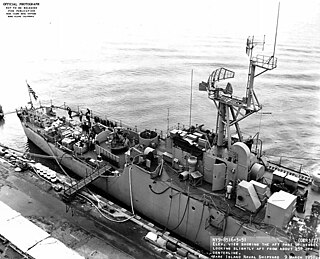
USS Joyce (DE-317) was originally commissioned as a US Coast Guard Edsall-class destroyer escort built for the U.S. Navy during World War II. She served in the Atlantic Ocean and the Pacific Ocean and provided destroyer escort protection against submarine and air attack for Navy vessels and convoys. During its World War II service, on two different engagements with enemy submarines, the Joyce rescued survivors of the tanker SS Pan- Pennsylvania and its sister ship USS Leopold. Joyce received one battle star for its service during World War II.
